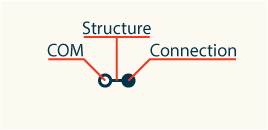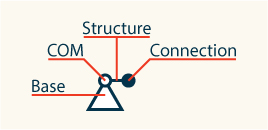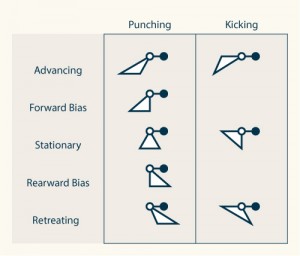In part 1, I talked about the difference between training martial arts yourself and depicting martial arts in animation. I want to get into breaking down striking techniques into their component parts but, before I do that, I should go over how I define those component parts.
To understand why I break things up the way I do, I’ll start with a question: When you punch a target, what are you hitting that target with? It’s understandable if you answered, “your hand,” but it doesn’t make sense when you think about it a little deeper.
For example, if a punch was just hitting someone with their hand, then every time a woman slapped a man for making a crude joke the man would get knocked out. Every time you patted somebody on the back for doing a good job, you’d collapse their lungs from the force of that encouraging gesture.
The reality is, when you punch you’re hitting the target with your body. The hand is just the point of contact transmitting that energy. So those are the first two components I think about: the Connection and the Center of Mass (COM).
 Your hand isn’t attached directly to your COM, so you need to transfer that energy efficiently out to the Connection. To accomplish this you require the third element: Structure.
Your hand isn’t attached directly to your COM, so you need to transfer that energy efficiently out to the Connection. To accomplish this you require the third element: Structure.
 Finally, to move your COM in such a way as to generate energy for the strike, you need a proper foundation: the Base.
Finally, to move your COM in such a way as to generate energy for the strike, you need a proper foundation: the Base.
In my practice, I’ve become really interested in how the Base functions. Besides allowing the COM to rotate it also provides or restricts movement. To clarify in my own mind how the base relates to movement I started making diagrams cataloguing the basic options.
From the standpoint of fight animation, I believe the Base communicates a lot of the personality of the character. Take a look at Guro Maul from Silat Suffian Bela Diri:
The thing that makes Guro Maul so controlled is keeping his COM centered over his feet. He is always in that Stationary Base position even when he’s moving. He looks supremely in control and effortless as he works. Compare that stability to some Capoeira Regional players:
This is an extreme comparison, but obviously this is more dynamic. Not better, but more dynamic and with a different character. These artists are operating almost exclusively in the Advancing and Retreating areas. They’re also in control, it’s just a perpetually moving control and one that allows opponents or an audience to predict where they’re going.
In part 3, I’ll address the COM, Structure and Connection, and how their movements and positions may differ in different systems and differ between reality and animation.

